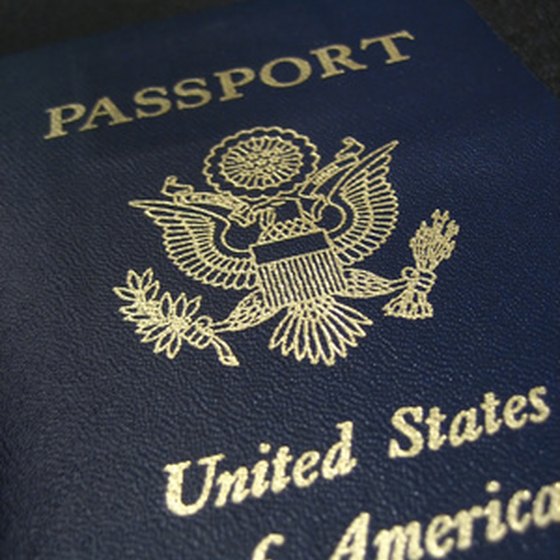When you're applying for your first U.S. passport, it can be surprising how much documentation you're required to assemble just to complete and submit your application. At minimum, first-time passport applications require airtight proof of citizenship, current official forms of identification, a passport photo and a form that provides information about you and your parents, a physical description of yourself and a summary of your travel plans. If the required birth records aren't available, applying for a U.S. passport becomes somewhat more complicated.
Form DS-11
Form DS-11 is the U.S. State Department's "Application for a U.S. Passport." The form requests basic information about the applicant, including that person's name, date and place of birth, address, telephone number and Social Security number. The form also asks whether the applicant has used an alias in the past, and requires the names of the applicant's parents, along with their birth dates and places of birth. Applicants must summarize their travel plans, describe themselves physically and provide a recent photograph. Applicants must not sign Form DS-11 until instructed to do so at the passport office.
Current Identification
Passport applicants must provide official proof of identification. Acceptable forms include an undamaged U.S. passport received previously, a naturalization certificate, a valid driver's license, a current city, state or federal ID or a current military ID.
Primary Evidence of U.S. Citizenship
Passport applicants must also provide evidence of U.S. citizenship. According to the U.S. State Department, it would be acceptable for a first-time applicant to use a certified birth certificate, a Consular Report of Birth Abroad or Certification of Birth, a naturalization certificate or a certificate of citizenship as primary evidence for the passport application.
If an applicant has completed the requirements of Form DS-11, possesses current identification and has located primary evidence of U.S. citizenship, the passport application may be ready for submission. If the applicant lacks primary evidence of U.S. citizenship, some additional steps must be taken.
Secondary Evidence of U.S. Citizenship
Those who cannot present primary evidence of citizenship must submit secondary evidence, generally something that shows they were living in the U.S. before the age of 5. For secondary evidence, the federal government might accept a baptismal certificate, hospital birth certificate, census record, early school record, family Bible record or a doctor's record of post-natal care.
Letter of No Record
Passport applicants who submit secondary documents, which the federal government refers to as "Early Public Records," must also submit a "Letter of No Record." This is a letter requested from the Vital Statistics office in the state or territory where the applicant was born. It must list the person's name, date of birth and the years for which the office searched for a birth record, and acknowledge that no such records could be found.
Form DS-10
Form DS-10 is called a birth affidavit, and it is used as additional proof of citizenship when an applicant cannot submit primary evidence. Form DS-10 must be completed and notarized by someone who has personal knowledge of your birth in the U.S. – ideally an older blood relative. Once notarized, it must be submitted in person with Form DS-11 and early public records.
References
Writer Bio
John Zaremba began writing professionally in 1997. He has worked at some of the country's finest small daily newspapers, including "The Beacon News" and "The Patriot Ledger." Zaremba is a graduate of the University of Illinois.




